The main types of wine every beginner should know. Each type offers a distinctive flavour, texture, and aroma. From the bold richness of the red wine to the light fruity sparkle of champagne, and other sparkling wines. Understanding these basics will help you select the right wine that suits your taste.
I have plotted a map below for your better understanding, and it is easy to classify each of the types.
But, before we go ahead, let’s understand what Tannins are which was mentioned where it’s found in my previous article. If you haven’t read the 1st article, you can click on
What Are Tannins In Wine?
Tannins are polyphenolic compounds that are naturally present in various plants, grapes. They are primarily derived from the skin, seeds, and stems of grapes during the wine-making process. Alright, let me clarify with an example, when one eats a black plum ( jamun), the colour of the tongue changes and it becomes darker and denser, that folks is “tannin” for you, but it is robustly essential in red wines.
Types Of Wine In The World
Wine is a fascinating world in itself, with numerous varieties. Let’s classify it.
And trust me, it‘s fun!
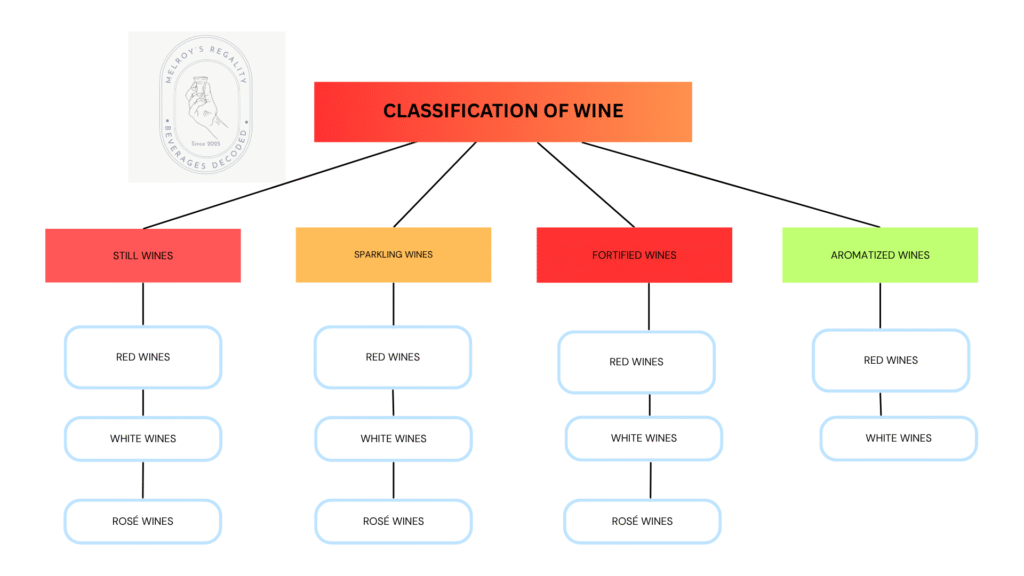
To begin with. Wines are classified into:-
- Still wines – include red wine, white wine, and rosé wine
- Sparkling wine – includes red sparkling, white sparkling, and rosé sparkling
- Fortified and aromatised – these wines are lawfully fortified with a spirit, usually brandy, and aromatised with selective herbs and spices.
Great, now that we are aware of the foundation, let’s construct!
Types Of Wine – Still Wines
The grapes for these wines are not just any grape; it’s a whole different colony, you can call it the Elite colony, as they sound very fancy and are foreign, of course!
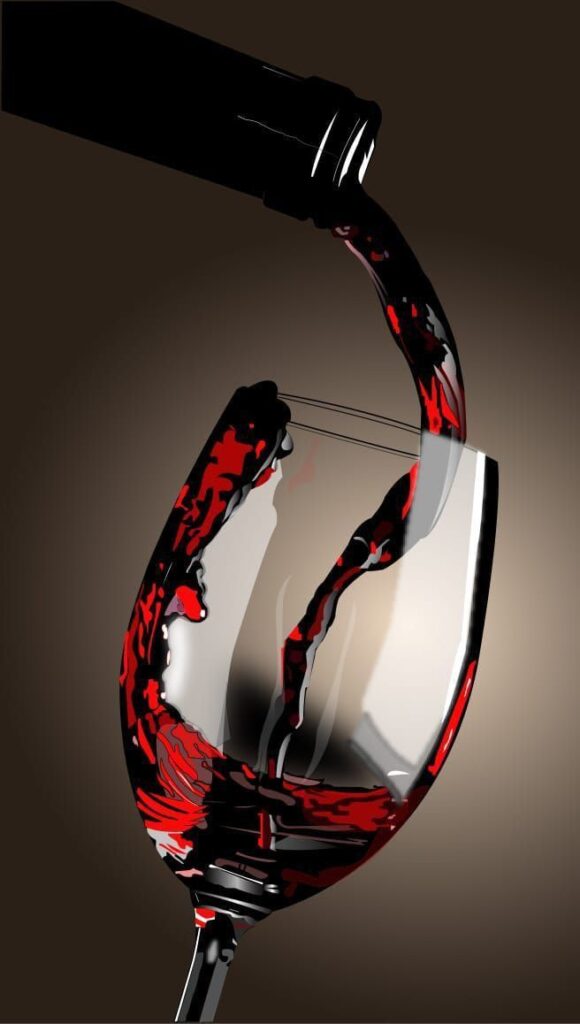
Red Wines – usually made from the red grapes, crushed, and the skin is left with the grape juice for quite a while to extract the dense red colour.
Below are a few French grape varieties mentioned:
- Red(or black) grape:- Cabernet sauvignon, merlot ´T´ silent, malbec, syrah, zinfandel, pinot noir (T gets silent and noir pronounced as Noah), etc.
- YES! French is an easy language.
Pro tip:- Noir in French means black
Rosé Wines are made from the same red(or black) grapes; however, the skin of the crushed grape is left with the grape juice for a very limited time, as per the winemaker, for a blush pink colour, which can vary from light to darker density.
P.S – Also it’s pronounced as Roh-zay. You’re Welcome!
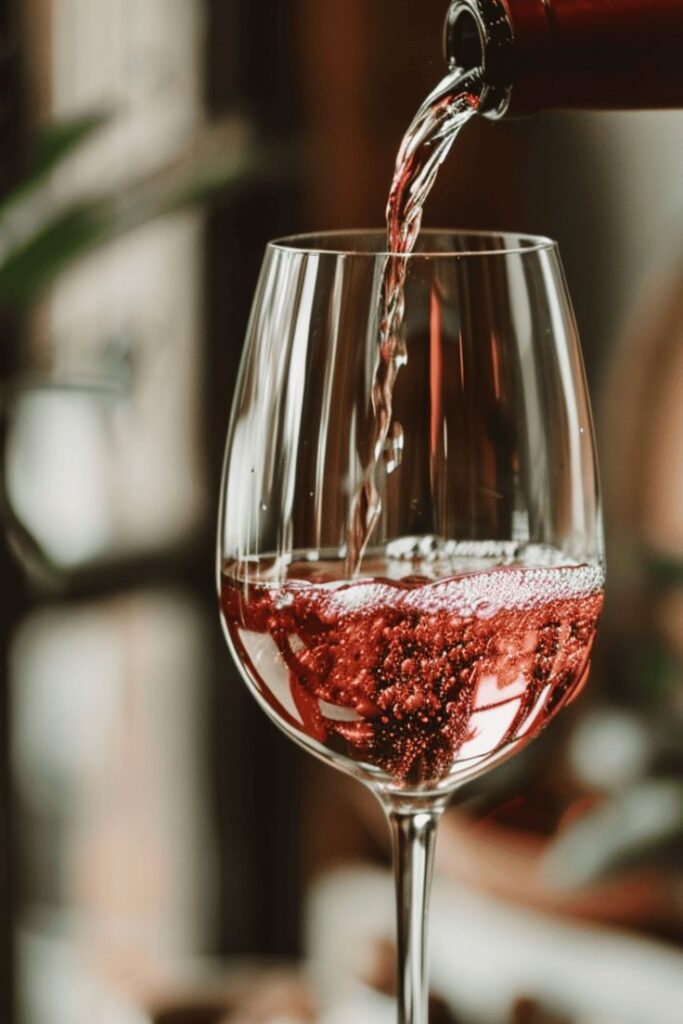
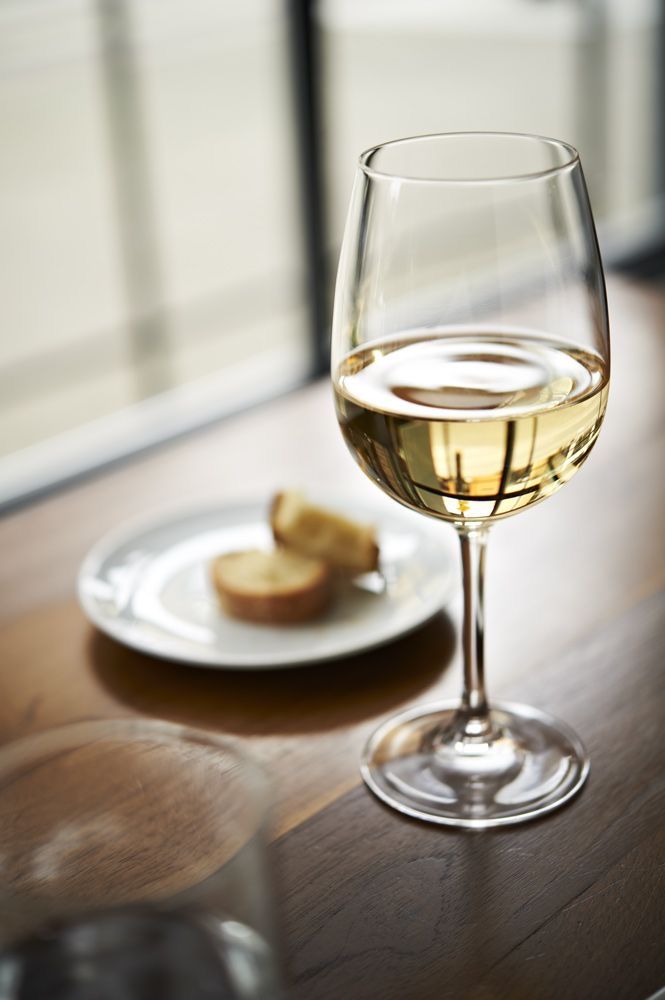
White Wine:- Usually made from white grapes, the following are the types of white wine grape varietals: Sauvignon Blanc, Chardonnay (shaa-donnay), Riesling, Chenin Blanc (shenin), etc.
But here’s a catch: Can we make a white wine with a red grape? Definitely yes, if the skin is taken out, it shall leave no colour.
Pro tip:- Blanc in French is white.
Difference Between Sparkling Wine And Champagne?
Sparkling wine is essentially still wine that undergoes a second fermentation, which introduces effervescence (carbon dioxide) that intentionally dissolves into the wine, forming smooth and gentle bubbles.
Before we move ahead, let’s do an exercise! – There are 2 types of phone operating systems: 1. IOS and 2. Android, just imagine how peculiar it would be for you not to identify them appropriately!
What I’m trying to address here is that not all Sparkling wines are CHAMPAGNE!
Allow me to clear that difference for you, Ladies and Gentlemen.
- Champagne comes from the Champagne region of France; it deliberately means that it is to be produced in that region to be called “Champagne”. Because it has an official GI (Geographical Index) status, which lawfully states to call it a Champagne, it needs to come from the Champagne region itself!
Whereas Sparkling wine can come from any part of the world.
Alright, so let’s simplify:- All Champagne is sparkling wine, but not all sparkling wines are Champagne.
Got it? If not, read that again!
Which Are The Major Grape Varieties Used To Make Champagne
- Pinot noir
- Pinot meunier
- Chardonnay
Activate your mind to find out the reds and whites! simple, Ain’t it?
Advanced pro tip:-
- Blanc de Blanc, meaning white from whites, understands that the wine is made from white grapes only.
- Blanc de noirs means whites from dark, the wine is made from dark grapes.
- Also, the above 3 mentioned grapes are not restricted to making the sparkling wine.
Is Brut Sparkling Wine the Same As Champagne?
The answer is no, Champagne and Sparkling Wine are not the same. Although they may come under the sparkling wine category, “Brut” refers to the level of dryness in the sparkling wine. “Dry” Designates a very low sugar content. On the other hand, Champagne can be crafted as Brut and also in different sweetness levels.
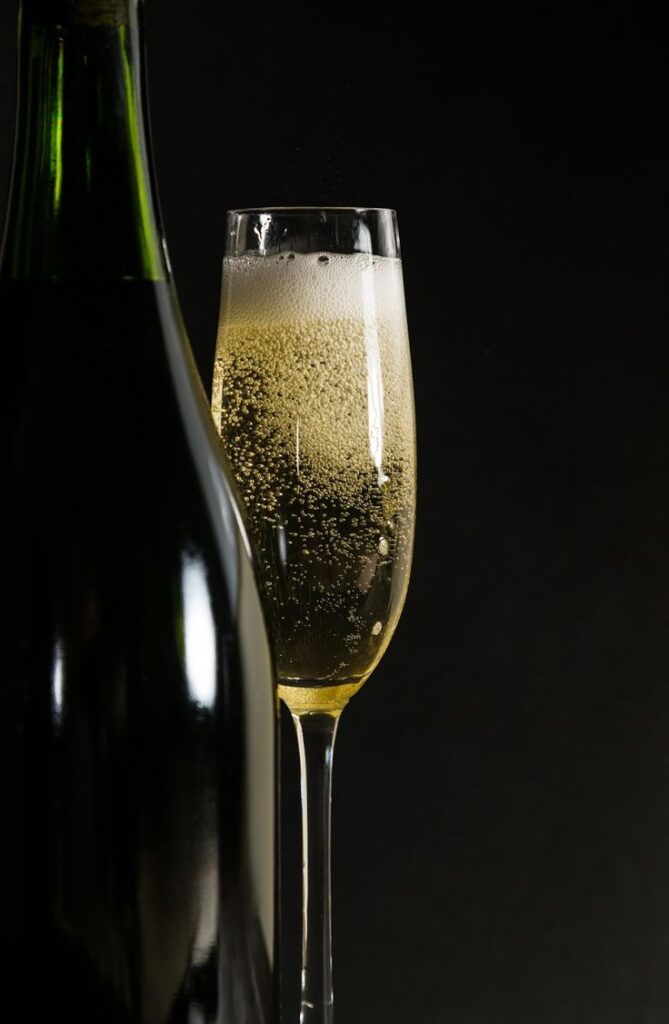
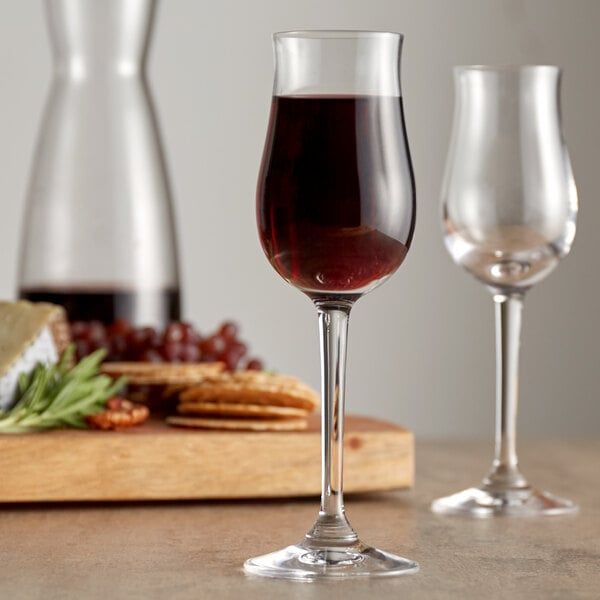
Fortified Wines Explained
Fortified wines are wines which are fortified with spirit, usually Brandy. These wines are either enjoyed on their own or used in cocktails.
Aromatised Wines are wines that are infused with herbs, spices, and other botanicals. These botanicals are infused in spirit and then added to the wine.
Wait, what’s fortified? – Fortifying is a process to add alcohol(spirit) to increase the strength of alcohol and its longevity. This was initiated in the early days to stabilise the wine as the voyages were long, and the temperatures were not consistent.
But why brandy? – As brandy is a spirit made from grapes, too. What grows together, goes together! …we will get to this in the later topics as we cover.
Well! That’s if you stay updated with my social updates.
Coming back to fortified wines..
From the initiation of stabilisation, it was also appreciated for its end product, which was strong and flavorful. Also, the alcohol content is significantly higher than the unfortified wines.
Ahem! hits you hard!!
Some examples of fortified wines are Port, Sherry, Madeira, Vermouth, etc.
Yes! The same port you purchased from the retail store.
Note– Wine contains alcohol from 12-15% and fortified wine ranges from 17-22% of alcohol.
Disclaimer: Images and external links used in this blog are for informational and illustrative purposes only. Credits belong to their respective owners unless otherwise stated.
No responses yet